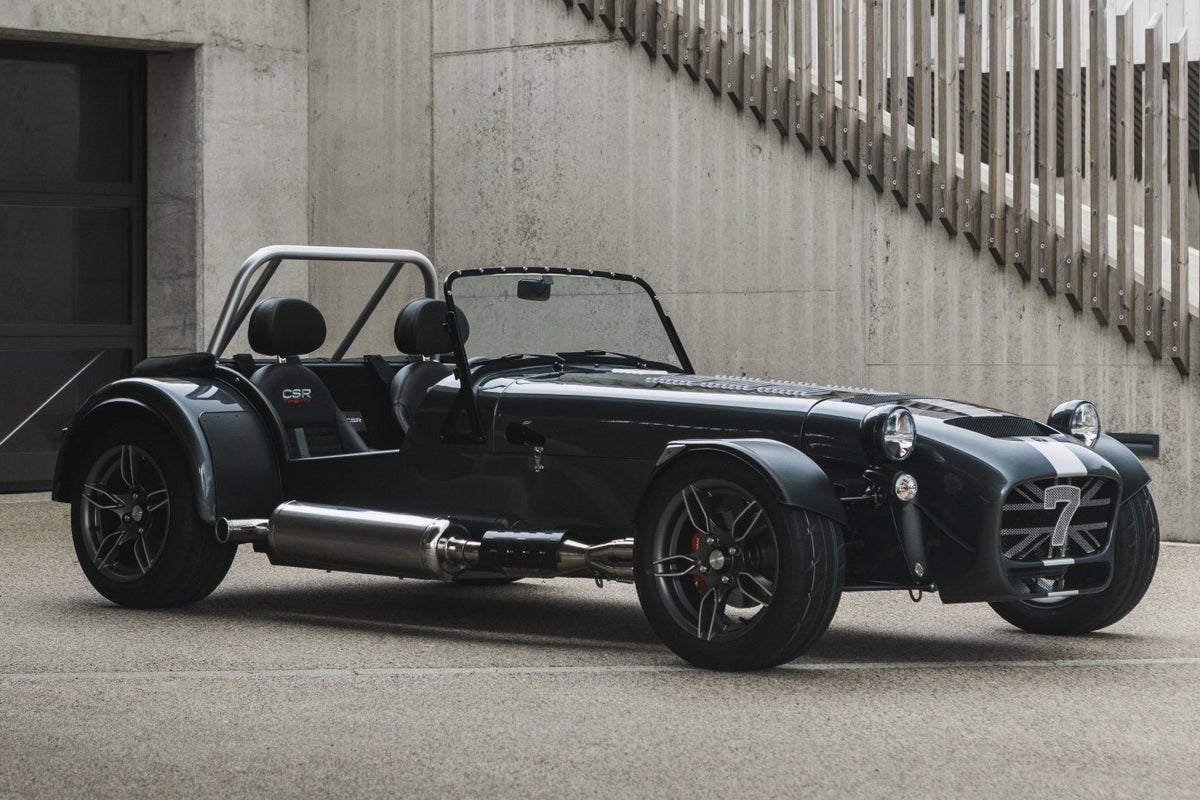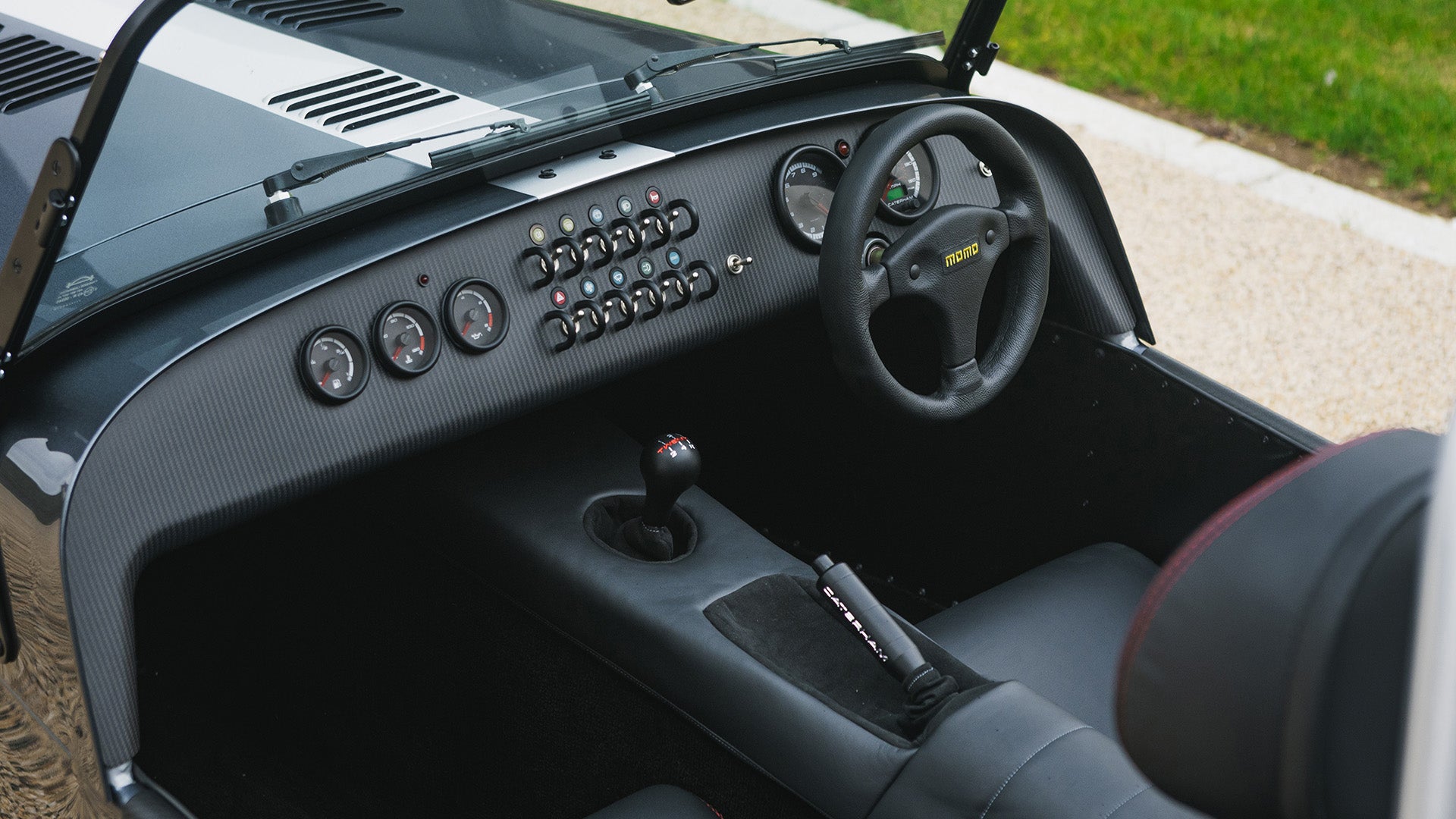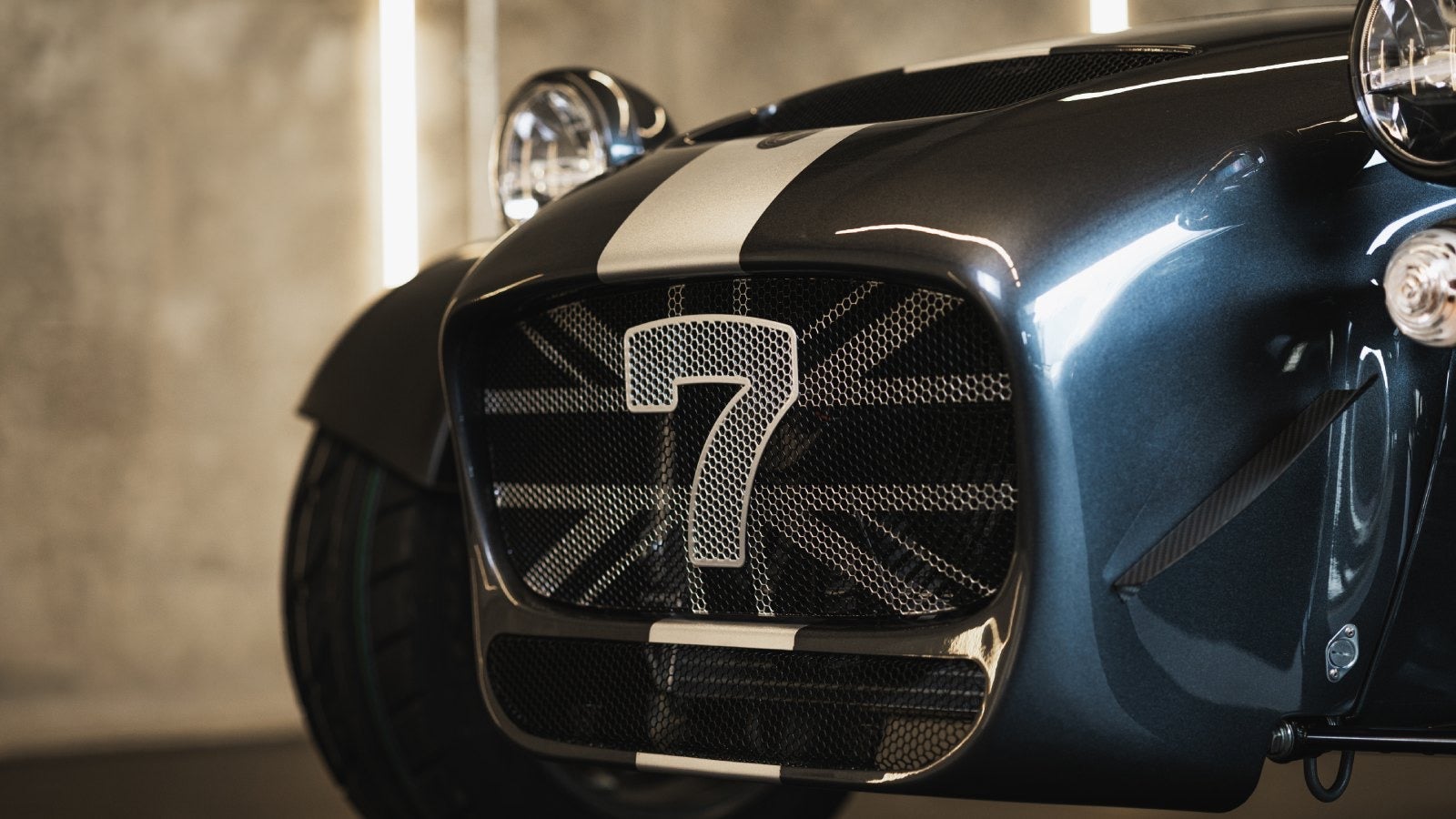Caterham Seven CSR 20: Hostage to a fortune

Dozy as I am, I didn’t think to check the price of my test Caterham Seven CSR 20 until I sat down to gather my thoughts. I had wanted to start my essay discussing its deceptive blend of retro style and high-tech features, and its long history as a British sports car legend.
However, you see, I was so gobsmacked that I have been forced to “nose off”, as we say in the trade, on something even more remarkable – its rather startling price tag of £79,995. Yes, you read that right. The most expensive Caterham ever. Chasing Porsche territory.
I remember the first time I encountered a Caterham in person, which was so long ago it was when we still had a proper British motor show, and, being a dreamer (a side effect of acute doziness), I actually considered spending about £10,000 on this absurdly impractical machine, possibly in build-it-yourself kit form. My reasoning was that you get a lot of acceleration for your money. That bit about the Caterham is still true now – 3.9 seconds from rest to 60mph in this CSR is still supercar performance, and pushing Newton’s laws of physics to their limits. But sadly, the car isn’t quite such good value for money any longer.
Thinking of it as you might when shopping for some prime sirloin, the lightweight Caterham costs some £129/kg, which is even more than a Bentley Continental GT Speed (£120/kg – much more expensive and correspondingly heavier), and, for comparison, in another world for value for money, is beaten soundly by the Mazda MX-5, at a bargain £27/kg. If you’re interested, the Dacia Spring electric car is the cheapest of all by weight – about £15 a kilo.

So you don’t get a lot of Caterham Seven CSR 20 for your cash, even allowing for the fact that this is a premium special and limited edition to celebrate the 20th anniversary of the larger CSR bodied car (because humans, like cars, are suffering an obesity crisis), and, now, the last of this wider type to be manufactured.
For some reason, British Caterham drivers like to create a sort of human muffin effect when they try to squeeze into their Caterham sports cars, much narrower than a bathtub. Getting into the thing with the canvas roof up involves a significant amount of undignified contortion. They must be in a terrible state of denial about their body shape.
On the plus side you do get a lovely two-litre Ford Duratech engine (no turbo, by the way), a nice smooth leather interior, a slightly classier looking dash, crafted from carbon fibre, a mohair-lined hood, extremely smart 15-inch diamond cut alloys and, and this is a throwback to the car’s distant origins as the 1957 Lotus Seven, a heater is listed as standard fitment.
The Spec
Caterham Seven CSR 20
Price: £79,995
Engine capacity: 2.0l petrol, 4-cyl, 5sp manual
Power output (hp): 210
Top speed (mph): 136
0 to 60 (seconds): 3.9
Fuel economy (mpg): 21.9
CO2 emissions (WLTP, g/km): 295
What you don’t get is a slightly longer list of stuff you’ve probably gotten used to – proper doors, a roof, windows (aside from the windscreen), power steering, cruise control, stability control, air conditioning, reversing camera, vanity mirror, smartphone induction charger, sat nav, radio, indicator and wiper stalks, or a touchscreen (no great loss that, to be fair).
Am I missing the point here? In one sense, of course, I am – because you’re paying for the experience – the sensual overload you get at any speed in this funster, the exquisite animalistic noises, the sense of stepping back into a bygone age, the challenge it offers to you as a driver, and being the centre of attention. Looking like a particularly sad case of the male menopause is one downside of all that, but, in all honesty, it can also be a bit of a sod to drive.

Yes, it’s highly responsive, with fancy double-wishbone rear suspension and with that Ford power unit it’s pretty up to date and capable. Yet I’m much more wary of this car than maybe I should be, because it doesn’t encourage one to push it too hard. So I didn’t ever really feel I could be in complete control of it.
I suspect, with its absence of electronic aids to tame it, it could land you in trouble if you didn’t treat it with the respect it demands. Or even if you did. There are other moans: getting the hood fitted with pop studs, up is also a faff, the clutch is quite heavy, the brakes need a good old shove and the steering is very hard work when parking.
Even if it were legal to do so, I couldn’t imagine attempting its 136mph top speed – twice the legal limit with only a thin piece of aluminium sheet between you and what Elon Musk might call a rapid unscheduled disassembly. The grim old joke about going out in the Caterham is that it’s handily coffin-shaped, to save time later.
Like all Caterhams, the CSR is most at home on a track day, carefree and unmolested by intimidating lorries, buses and giant SUVs looming large all around. Vulnerability as well as excitement – two sides of the same coin, I suppose – come as standard.
So it’s a brilliant piece of engineering, and as the badge on the bonnet states proudly, “Made in Great Britain”, which is heartening. As noted, this Caterham is very expensive but will probably hold its value (they’re only building 20 for the UK), and the lines are undeniably classic, and surprisingly well suited to modern paint finishes and styling touches.
It’s easy to fall in love with, despite the flaws and the ridiculousness of it, and it enjoys a devoted following, particularly among those who remember the cult TV series The Prisoner. But, even for someone as sentimental and atavistic as this punter, for £80,000 I’d look elsewhere for my old-school thrills.
[title_words_as_hashtags




